Workplaces That Don't Work
Must-read content on workplaces, flexibility and performance
This week’s newsletter is chock-full of content for folks who are wrestling workplaces, policies, and team performance. After the main feature:
Watch party: The Flex Index State of Flex webinar.
Hot takes: Annie Dean, VP Future of Work at Atlassian goes to CBRE.
Hot off the press: Nearly 100 slides of the latest data and research.
Let’s get to it!
Most Workplaces Aren’t Working
Despite decades of workplace innovation, billions in office renovations, and endless discussions about "the future of work," space effectiveness hasn't fundamentally improved since 2008 in the U.S.
That revelation comes from Janet Pogue McLaurin, who leads workplace research at Gensler and has spent 20 years linking design to business performance. Her team's latest study surveyed 16,809 full-time office workers across 16 countries, and found that lack of real improvement.
"A workplace that doesn't work isn't a workplace, right?" Pogue McLaurin told our Work Forward Forum recently. "It's still distractions, noise, interruptions, and functional issues that I would have thought by now we could have made progress against, but they're still prevalent."
The problem runs deeper than broken conference room technology or noisy open offices.
"Clearly in the survey data, a number of organizations are thinking about space as a cost instead of leverage. Space is a tool just like technology is a tool to help employees work better."
Meanwhile, the most successful companies are moving beyond managing offices to curating experiences – and the results speak for themselves.
Janet Pogue McLaurin, Gensler Global Director Workplace Research
The Generational Myth That's Costing You Money
One of the biggest misconceptions driving workplace decisions? The idea that different generations want fundamentally different things from their office experience.
Gensler's research debunks this myth. When they analyzed responses by age groups across 16 countries, the top reasons for coming to the office were strikingly consistent:
In-person collaboration and socialization
Focus area for my work
Even workplace preferences showed remarkable similarity. Whether employees were 18 or 60, they wanted the same types of experiences: a variety of spaces that acted as nature retreats, business hubs, creative labs, and residential-feeling spaces.
Janet noted that the usage of decade brackets versus generational labels was intentional: that the commonly used generational labels often get abused, or not as relevant globally. As Ryan Anderson from MillerKnoll noted during our discussion, "Life stage and career stage has much more bearing than arbitrary generational labels."
Image by Gensler
The real differences showed up by country and industry, not by generation.
Have a look across China versus Japan versus the UK in their result, and you get very different perspectives — or Costa Rica versus the US.
Why does all this matter? Where we focus matters because companies waste resources designing for imaginary generational divides while missing the real drivers of workplace satisfaction.
Importantly, while some firms have moved away from “one size fits all” global approaches — stamping out the same veneers, carpets and layouts globally — many have adjusted to accommodate regional differences. The result? Happier, more engaged employees.
The IKEA Effect: Why Employee Input Drives Results
Here's where smart organizations separate themselves from the pack: they involve employees in workspace design decisions.
Gensler found that only 21% of workers felt "greatly included" in recent office updates. But those who were involved showed dramatically better outcomes:
Better access to spaces for critical work activities
Higher workplace performance scores
Significantly higher experience ratings
The biggest gains came from involving non-senior employees: a 20-point difference in satisfaction between those included versus excluded from design decisions. Maybe we’re designing too much for the guy with the corner office?
As Anderson explained, this taps into the "IKEA effect" — when people have a hand in creating something, they value it far more than even expertly designed alternatives.
Another participant shared how they approach this challenge at her company: "We use qualitative researchers embedded on my team, especially for big changes. It can win goodwill from people and involve them, and it's less scary than surveys that might set expectations for change."
Does this impact people’s willingness to come to the office? Absolutely. Hassell Studios in a global survey of 15k desk workers found that mandates had no impact on attendance, but did reduce satisfaction by 14%. They also found that redesigning offices boosted attendance: 15% higher at companies that have recently renovated spaces or upgraded equipment
Image by Gensler
From Managing Offices to Curating Venues
The organizations getting this right have made a fundamental shift in thinking. As one participant put it: "We no longer manage offices, we manage venues."
This isn't semantic — it's strategic. Venues are designed around experiences, not efficiency. They consider emotional impact at every touchpoint, from the anticipation of arrival to the lingering satisfaction after departure.
Some use storyboarding techniques borrowed from their core product to map employee journeys: What does it feel like to be a first-time visitor to headquarters? How do you soften the anxiety of navigating a new building? What makes someone want to return?
Others have taken a similar approach, shifting the language not only away from “office” and towards terms like hubs, and in the case of Zoom getting more specific about the intent of different locations: engagement hubs for employees, innovation spaces centered on cross-discipline interaction with customers and technology, and experience centers for customers.
This also ties in quite heavily with Annie Dean’s new role at CBRE, who put it this way:
“People and companies know that offices are changing and that offices need to start feeling maybe a little bit more like hotels, with great service, seamless technology, inspiring design, and workplaces that create a true sense of place.”
Last, and not least, JLL’s Peter Miscovich released new research today that doubles down on the need for better spaces:
Employers that smartly invest in workplace design and fit outs that promote wellbeing can create high-performance work environments that will support the various life stages of employees … promoting long-term talent attraction, retention and future business growth.”
Image by Gensler
What Actually Works: Three Action Steps
The research points to clear strategies that drive results:
1. Start with employee involvement, not executive assumptions. Use focus groups and employee resource groups as starting points. As one participant noted, "There's people that would love to raise their hand and help build" rather than seeing it as "us versus them."
2. Think experiences, not square footage. Map out the emotional journey employees have in your space. Where do they feel energized? Where do they get stuck? What would make the experience memorable rather than merely functional?
3. Pilot before you scale. Don't bet everything on headquarters renovations. Test concepts in smaller locations first, learn what works, then adapt for larger implementations. Pagerduty provides an example.
The stakes are real. One participant put it perfectly: "If you don't get the employee input now, you might as well set aside the capital to redo it later."
The Choice Ahead
After 15 years of stagnant space effectiveness, organizations face a clear choice: keep managing offices like cost centers, or start curating venues that drive engagement, performance, and results.
The data shows which path leads to success. The question is whether your leadership team is ready to make space the strategic tool it should be—or whether you'll keep shoving them to come back into spaces that don’t work.
What's your organization's approach to workplace design? Drop a comment and share your thoughts!
On-Demand: State of Flex Webinar Now Available!
Missed the Flex Index live event on Sept 3rd? Now you can catch up on all the latest data, insights, and trends with the on-demand recording!
Here’s a sneak peek of what you’ll learn from the on-demand session:
Our brand new Q3 Flex Index findings and workplace flexibility trends
Latest research on employee engagement and productivity drivers
Annie Dean: Strategist and Speaker
ICYMI, one of the biggest names in workplace flexibility just switched from operator to facilitator. Annie Dean, friend and expert, is now Chief Strategy Officer of CBRE’s Building Operations and Experience $20 billion unit that oversees 7 billion square feet (!!) of real estate.
Annie Dean, courtesy Business Insider
“Flexible work is clearly now the norm. But the next challenge incumbent on us is to take these physical spaces and to make them live up to the promise of what an office can and should be."
Should sound familiar based on today’s lead article.
Also, you never know, Annie just might turn up at the Charter Workplace Summit in NYC (and online) on October 14th. I’ll be there!
p.s. WORKFORWARD50 gets you half off the in-person ticket price!
Download: Research, Data and Case Studies
Over 90 pages of the latest and greatest from Flex Index, BCG, Stanford, Gallup, JLL (brand new today!), CBRE, Cushman & Wakefield and many more.
Headlines vs reality: dozens of data sources telling us what’s real and what’s wishful thinking
Research vs platitudes: case studies, academic and high quality data-driven sources of best practices
Access to a full compendium of slides, yours for the taking. Just make sure you credit the sources and point people towards Flex Index and this work!


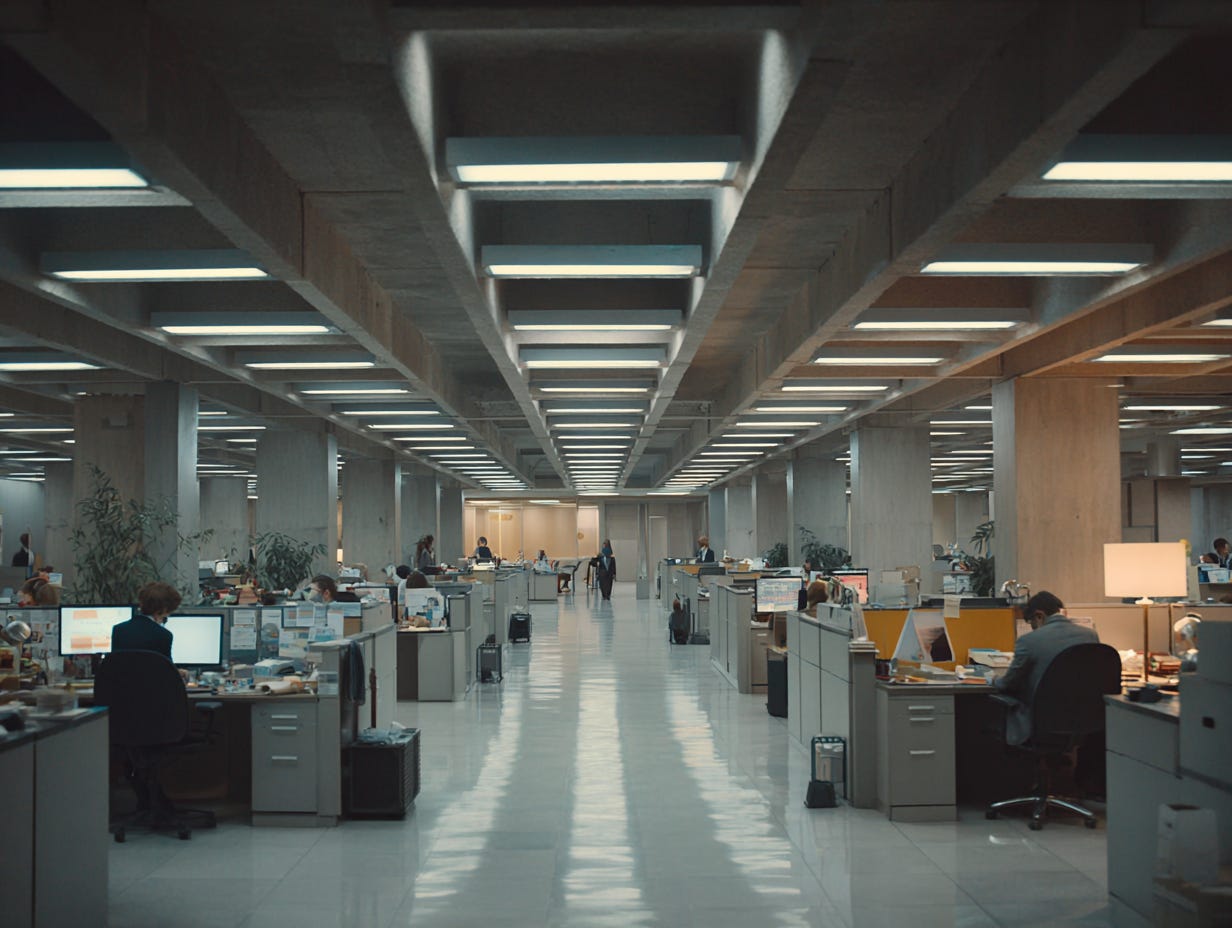

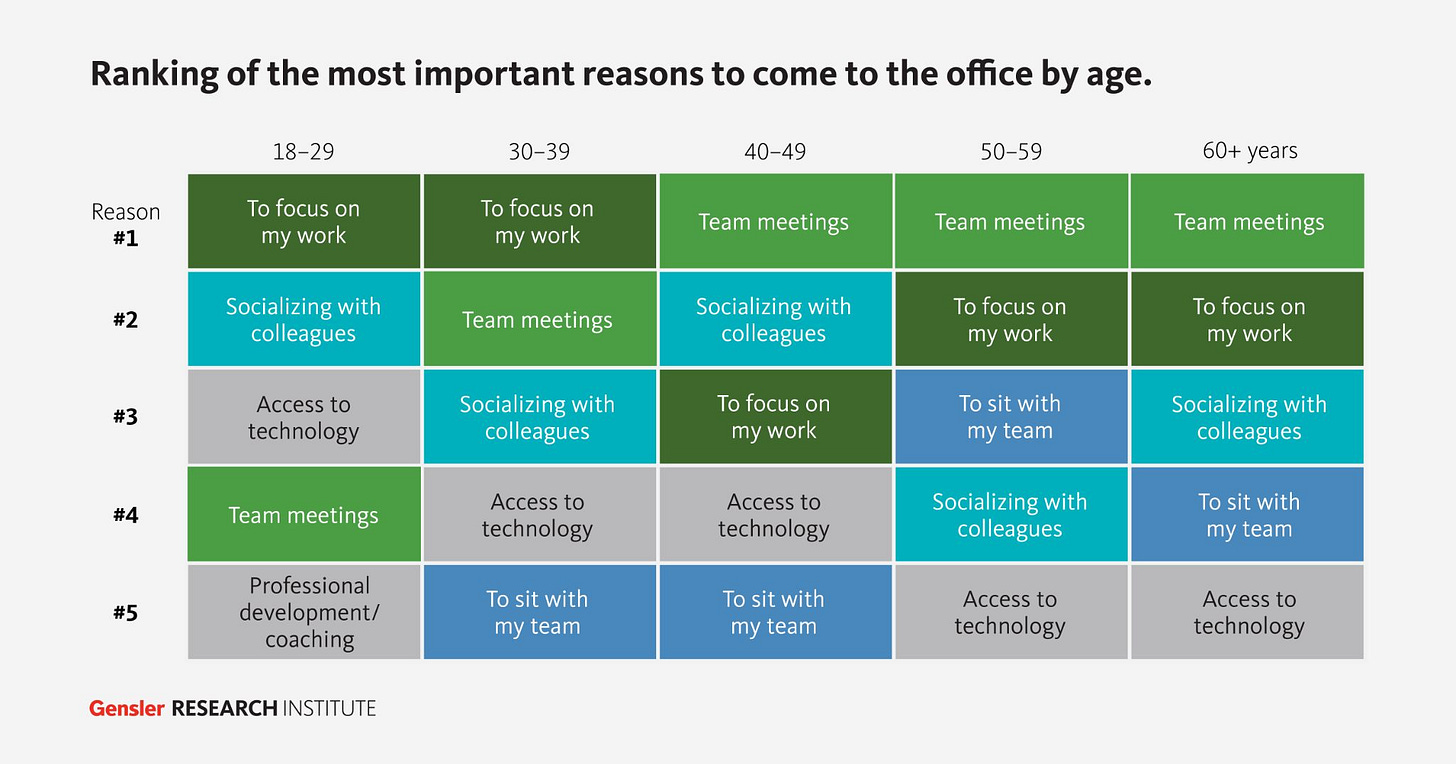

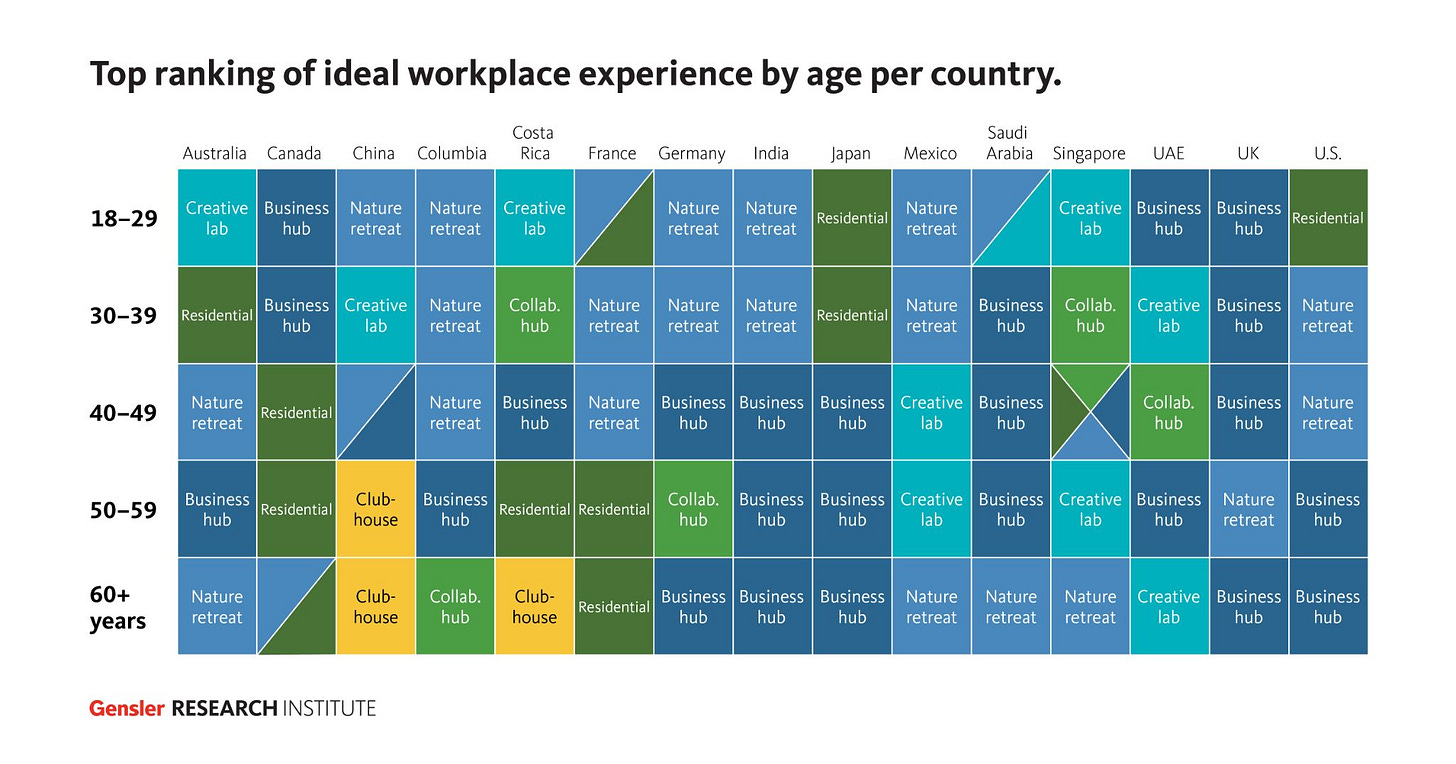
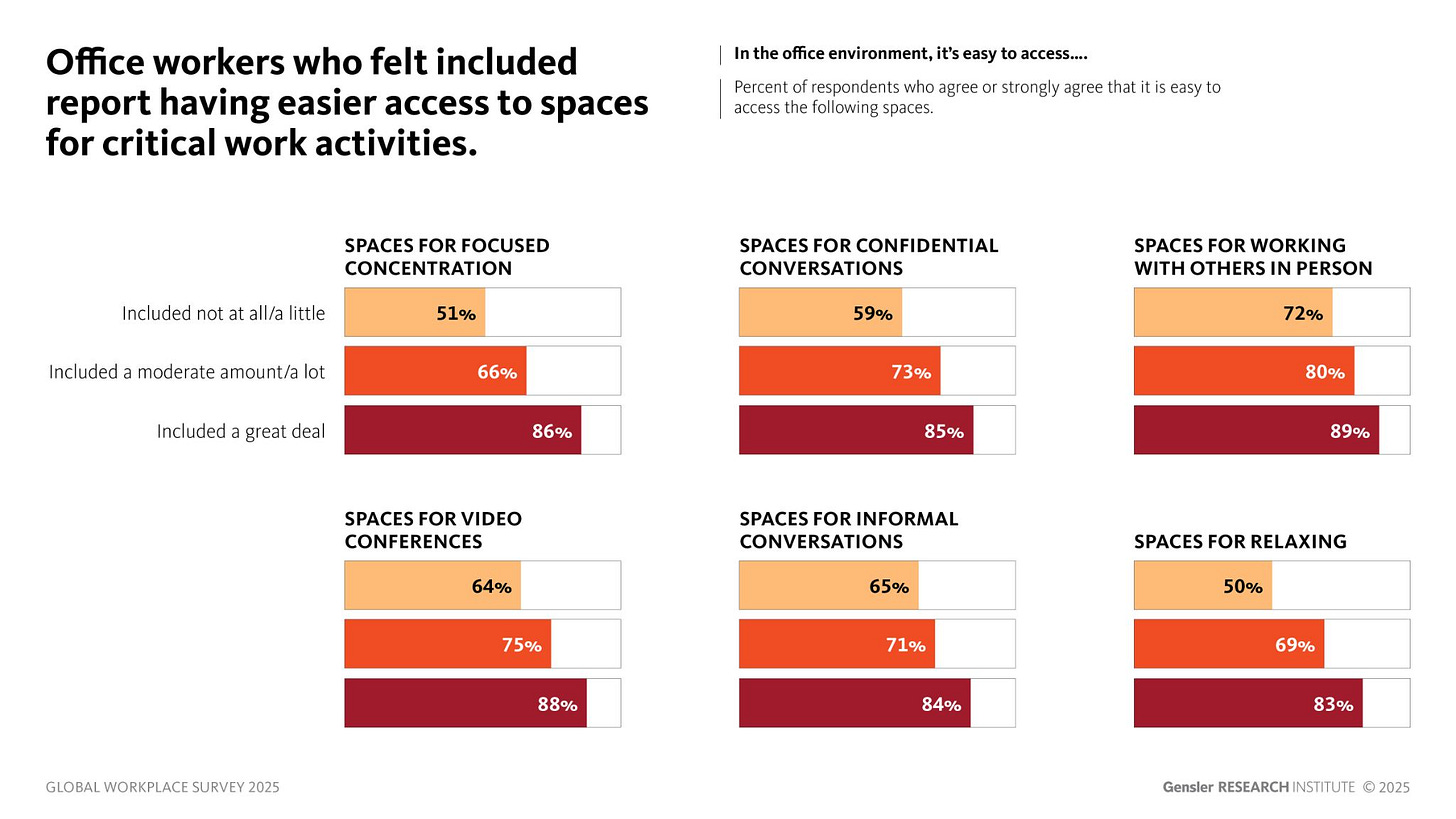

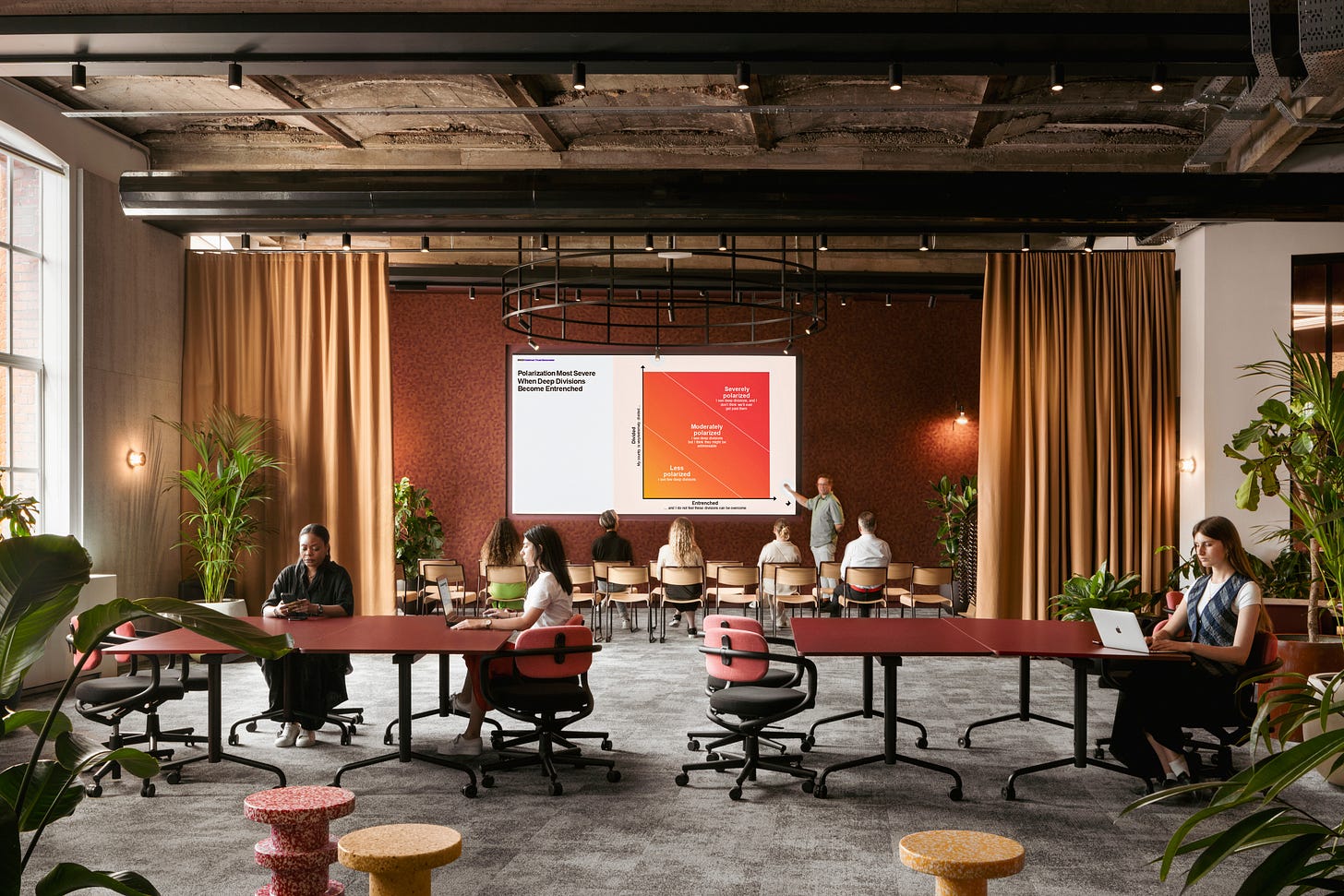

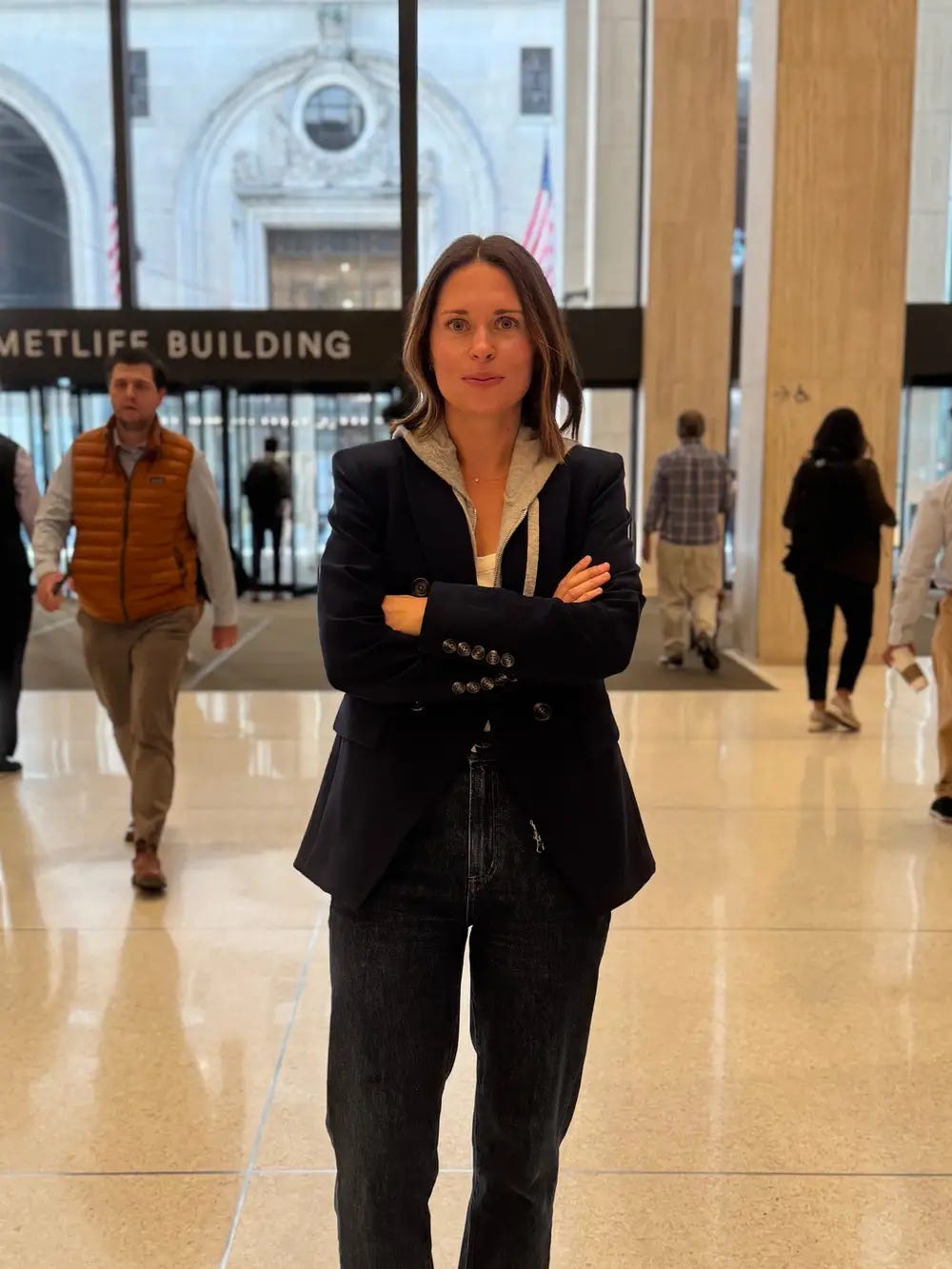
Hey Brian! Venue over Office! I think that’s the only way to value the today’s needs of our associates.
However creating venues doesn’t stop shoveling employees back to office.
The hybrid approach is still alive:
You can work wherever you want. But 3/5 days you’re expected to be in the office.
The reason? Mismanagement of resources. PM who hang on the phone 7.5 of 8 hours a day don’t care about office layouts.
Low office attendance can’t be solved by brilliant facility management—just mitigated.